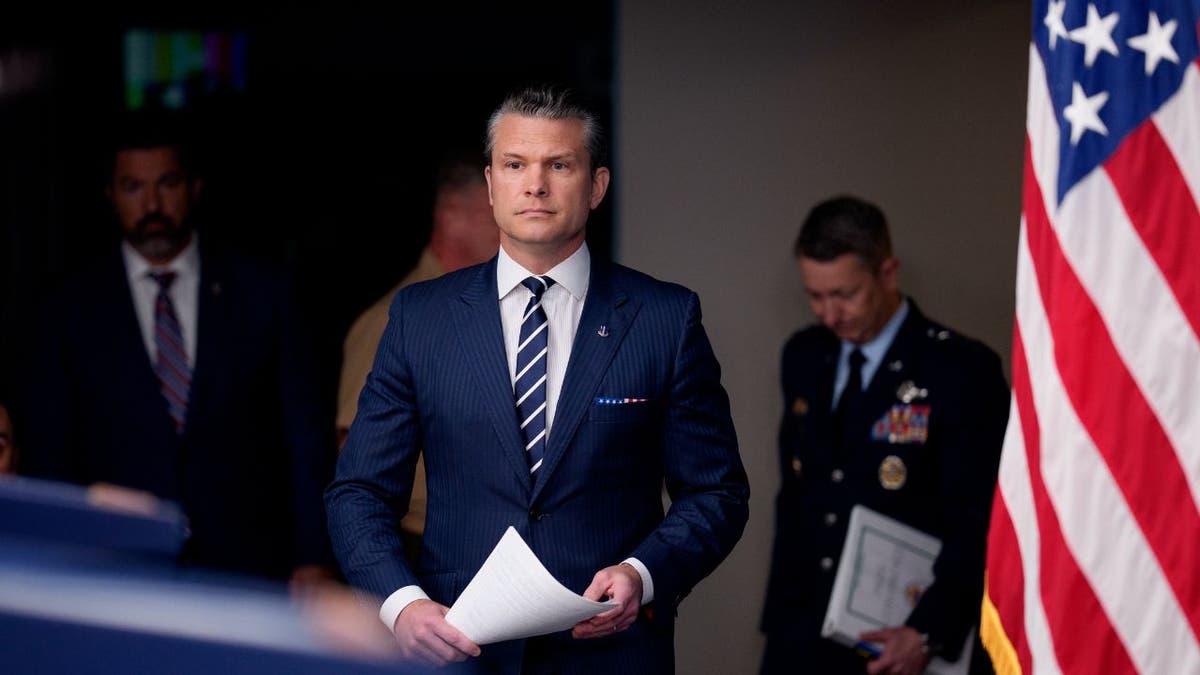
NEWYou can now listen to Fox News articles!
EXCLUSIVE – The War Department is narrowing its research and development strategy to six “Critical Technology Areas” officials say will speed up innovation and strengthen America’s military edge.
Under Secretary of War for Research and Engineering Emil Michael said the plan will deliver faster, more focused results to the warfighter by merging overlapping programs and steering funding toward technologies that will shape future conflicts.
“As the Department of War’s Chief Technology Officer, I am statutorily charged with the mission of advancing technology and innovation for the armed forces,” Michael wrote in a Nov. 13 memorandum to senior Pentagon and combatant command leadership. “The previous list of fourteen CTAs did not provide the focus that the threat environment of today requires.”
The six areas—Applied Artificial Intelligence, Biomanufacturing, Contested Logistics Technologies, Quantum and Battlefield Information Dominance, Scaled Directed Energy and Scaled Hypersonics — will be advanced through rapid “sprints” designed to move emerging technologies from prototype to production.
ARMY SECRETARY REVEALS HOW RANGERS BYPASS PENTAGON RED TAPE TO COUNTER EXPLODING DRONE THREAT
The Pentagon is seen from a flight taking off from Ronald Reagan Washington National Airport in Arlington, Virginia. (Alex Wong/Getty Images)
Secretary of War Pete Hegseth said the streamlined approach will keep the United States ahead of its rivals.
“Our nation’s military has always been the tip of the spear,” Hegseth said. “Under Secretary Emil Michael’s six Critical Technology Areas will ensure that our warriors never enter a fair fight and have the best systems in their hands for maximum lethality.”
The initiative also aligns with President Donald Trump’s Artificial Intelligence Action Plan, which directs the War Department to become an “AI-First” organization.
Officials say the shift will reshape how intelligence is processed, how logistics are managed and how weapons systems are deployed.
“In alignment with President Trump’s Artificial Intelligence (AI) Action Plan, the Department of War must become an ‘AI-First’ organization,” Michael wrote. “When adopted rapidly, AI will fundamentally transform the Department from the enterprise-level, to intelligence synthesis and to warfighting.”
WAR DEPARTMENT PUSHES BACK ON ‘FALSE’ NARRATIVE OF INTERNAL STRATEGY SPLIT

Defense Secretary Pete Hegseth arrives for a news conference at the Pentagon, June 22, 2025, in Arlington, Virginia. (Andrew Harnik/Getty Images)
Michael’s plan emphasizes resilience and self-sufficiency on the battlefield. Biomanufacturing will create bio-based materials to reduce reliance on foreign suppliers, while Contested Logistics Technologies will help U.S. forces sustain operations in contested or denied environments.
The goal, he said, is to ensure troops can fight and resupply even when traditional lines are cut. Each new technology area is meant to reinforce that capability.
“Future warfare will likely be characterized by contested environments in which the Joint Force is challenged to surge, operate into and within the operational theater, and resupply, reconstitute, and recover forces,” Michael wrote. “This CTA will enable the demonstration, validation, and scaling of novel approaches and technologies.”
HEGSETH SHREDS SOVIET-STYLE BUREAUCRACY AND ‘FIVE-YEAR PLANS’ GOVERNING PENTAGON

Artificial intelligence and quantum computing are among the six new technology areas the War Department says will shape future U.S. military operations. (Getty Images)
Other priorities include quantum computing for secure battlefield communications, scaled directed energy systems such as high-energy lasers and high-power microwave weapons, and the expansion of hypersonic capabilities for both offensive and defensive missions.
CLICK HERE TO DOWNLOAD THE FOX NEWS APP
Each effort depends on close coordination between the Pentagon, private industry and allied militaries to ensure the technologies reach the field quickly.
“Executing these sprints will require unprecedented coordination between the Office of the Under Secretary of War for Research and Engineering, military departments, combatant commands and other Office of the Secretary of War components,” Michael said. “I am committed to working with you and our partners inside and outside of the Department on these efforts.”
